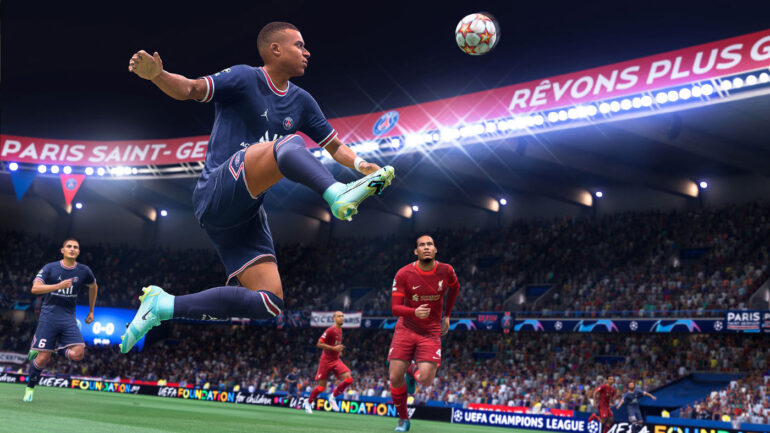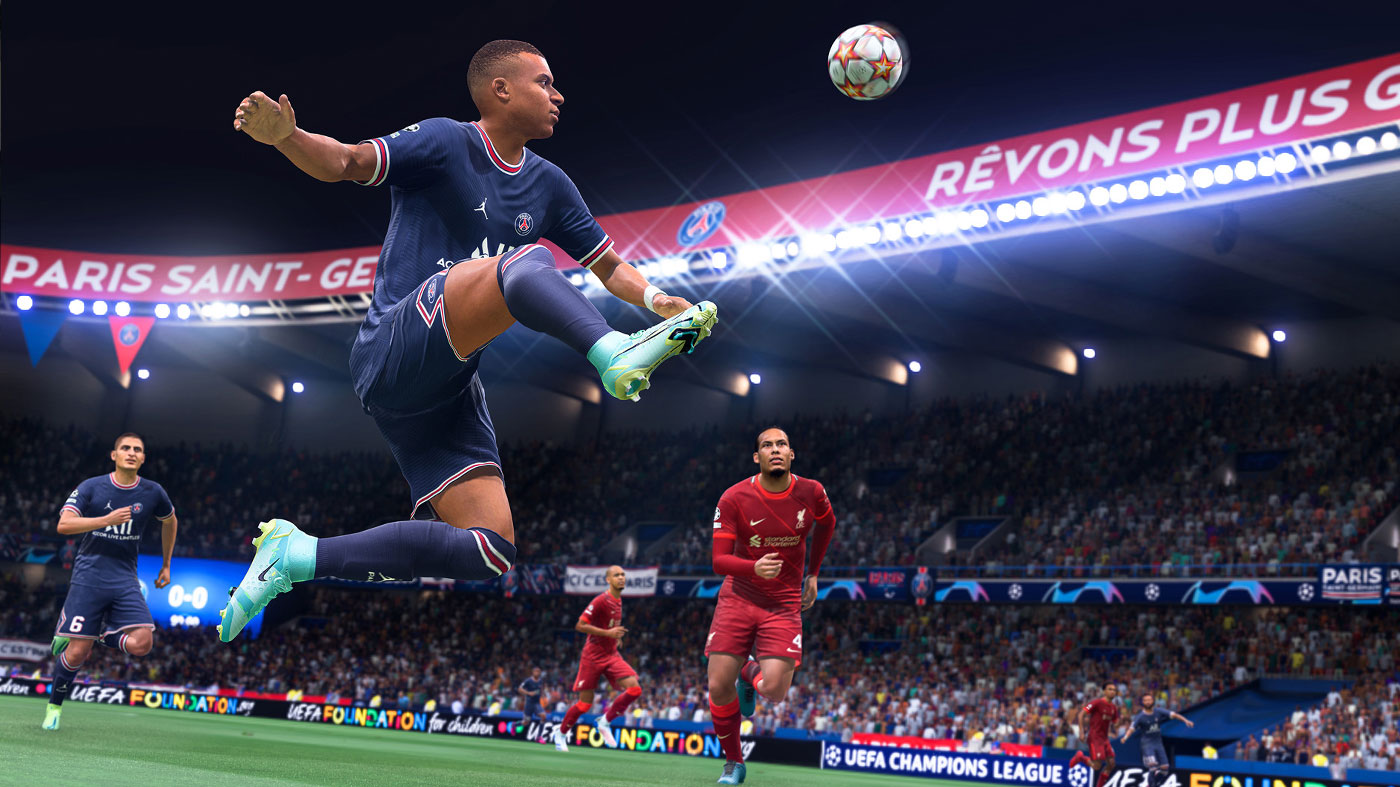FIFA 22 finally feels like it’s fulfilling the series’ potential. Armed with HyperMotion technology that makes the flow of a match look and feel more realistic than ever, alongside major new changes to the game’s Career Mode, there’s no doubting this is the best entry in the series for some time.
HyperMotion is the star, here. This has been the biggest selling point throughout the advertising campaign for the game, and it’s easy to see why. EA’s updated the game with over 4,000 new animations, covering every piece of motion you’d expect to see in the beautiful game – from set pieces to shooting, dribbling to goalkeepers being lobbed, everything looks more realistic this year.
This drastically changes the flow and general gameplay of FIFA. Whether that’s for the better will depend on how you play the game, however I generally loved it. The game seems to mimic the real sport a lot more accurately than before. And while it took me some time to get used HyperMotion – I even had to drop the difficulty down to get a better feel for it before moving back up – it’s worth it. The technology makes the game look and feel more immersive and smashing in a sweet volley has never looked so good. It’s a shame this tech is exclusive to PlayStation 5, Xbox Series consoles and Stadia, though.
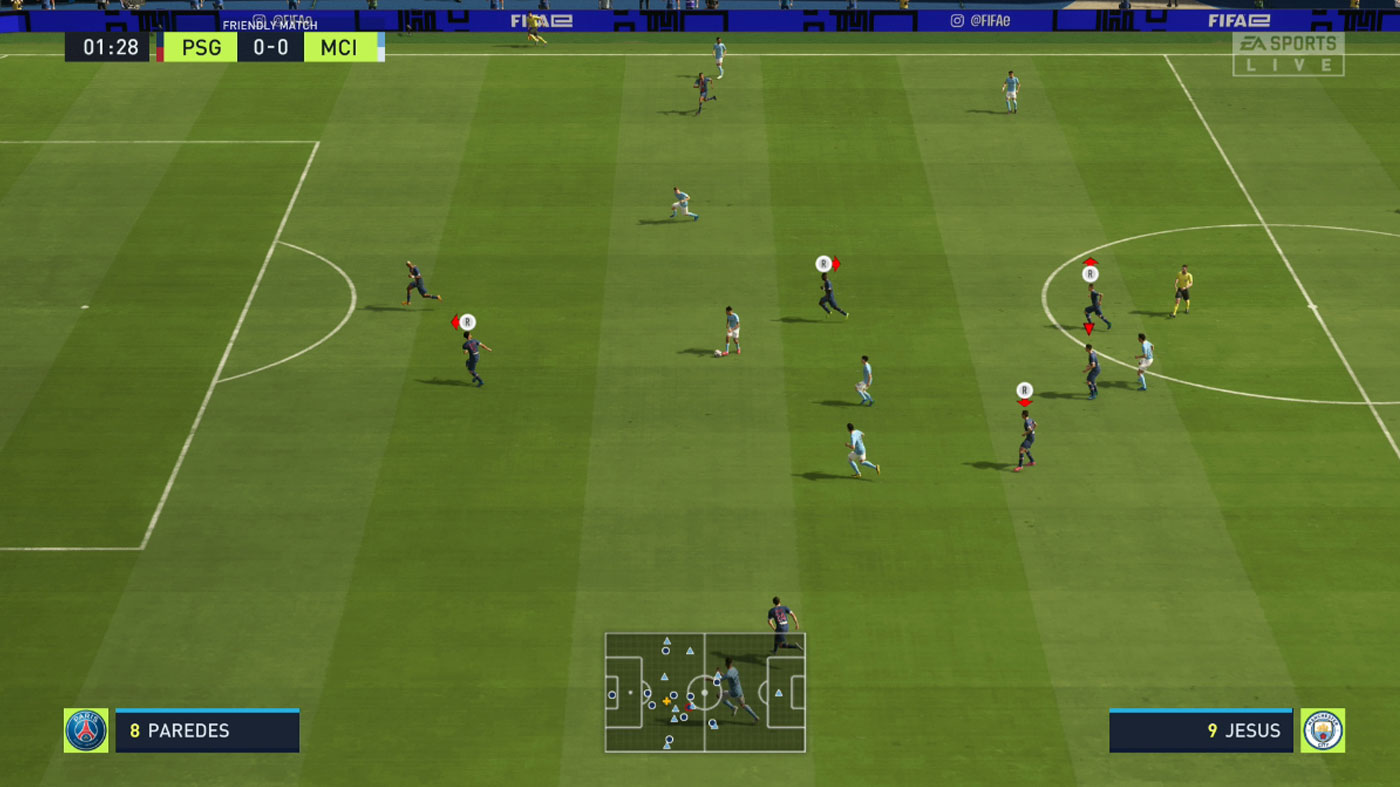
Even so, this year’s all about slow build up play and the driven finish, with goalkeepers significantly upgraded in FIFA 22. Shots that would easily bypass a keeper in FIFA 21 are almost always saved, and I appreciated the way goalkeepers now properly guard their net. It made me think more about shot placement and how to guarantee my strike would end up in the back of the net.
General A.I. seems to be improved across the board, too. Opposition players track attacking movement a lot better this year, and simple through balls I often relied on in FIFA 21 were cut out often. This made possession-based play even more important, with the A.I. more than capable of pulling off a quick and decisive counterattack. I liked the fact overlapping runs were mostly accounted for by the opposition this year, and general defensive positioning was spot on. It made me think more about where to place a pass while noting where my midfielders and defenders were in case we were sprung on the counter.
Most of the series’ modes have seen some sort of improvement in FIFA 22 yet the biggest changes come to Career Mode. Managing a team in Career Mode this year gives you the ability to create a club from scratch, adding them into any league of your choosing. You’re able to customise the club’s kit, crest and stadium, bringing randomly generated players into the side and assigning a specific budget and board expectations.

As someone who spent way too much time dabbling with club creation back in the Pro Evolution Soccer days on PSP, I was overjoyed to see club creation make its way to FIFA this year. The creation suite is somewhat limited but is certainly a solid foundation to work from.
You can’t add any sponsors onto a kit, for example, which makes the general design a bit plainer that I’d have liked. As well as this, numbers and names on the back of the kit don’t follow the design of the league you’re in, which takes away from the immersion. I’m curious as to why this couldn’t have been done given licensed club kits are updated with the relevant league designs when they’re relegated or promoted in Career Mode. Needless to say, it’s a step in the right direction. I also really liked the fact you’re able to update your team’s kit at the start of each season as it keeps things feeling fresh.
Another great bit of customisation comes by the way of the stadium editor. Taking a cue from Ultimate Team’s FUT Stadium, you’re able to adjust a multitude of things in your created club’s stadium – from the colour of the seating and pitch design all the way through to crowd chants during a match. This can be customised at your leisure, and makes the experience feel more personalised.
Player career has had a bit of a rebuff, too, with the Volta-styled skill tree making its way across. Subsequently, this mode feels more like a sports-RPG than ever before. You now level up throughout the mode, allocating skill points, perks and archetypes to your player as you go from being in the reserves to a first XI player.
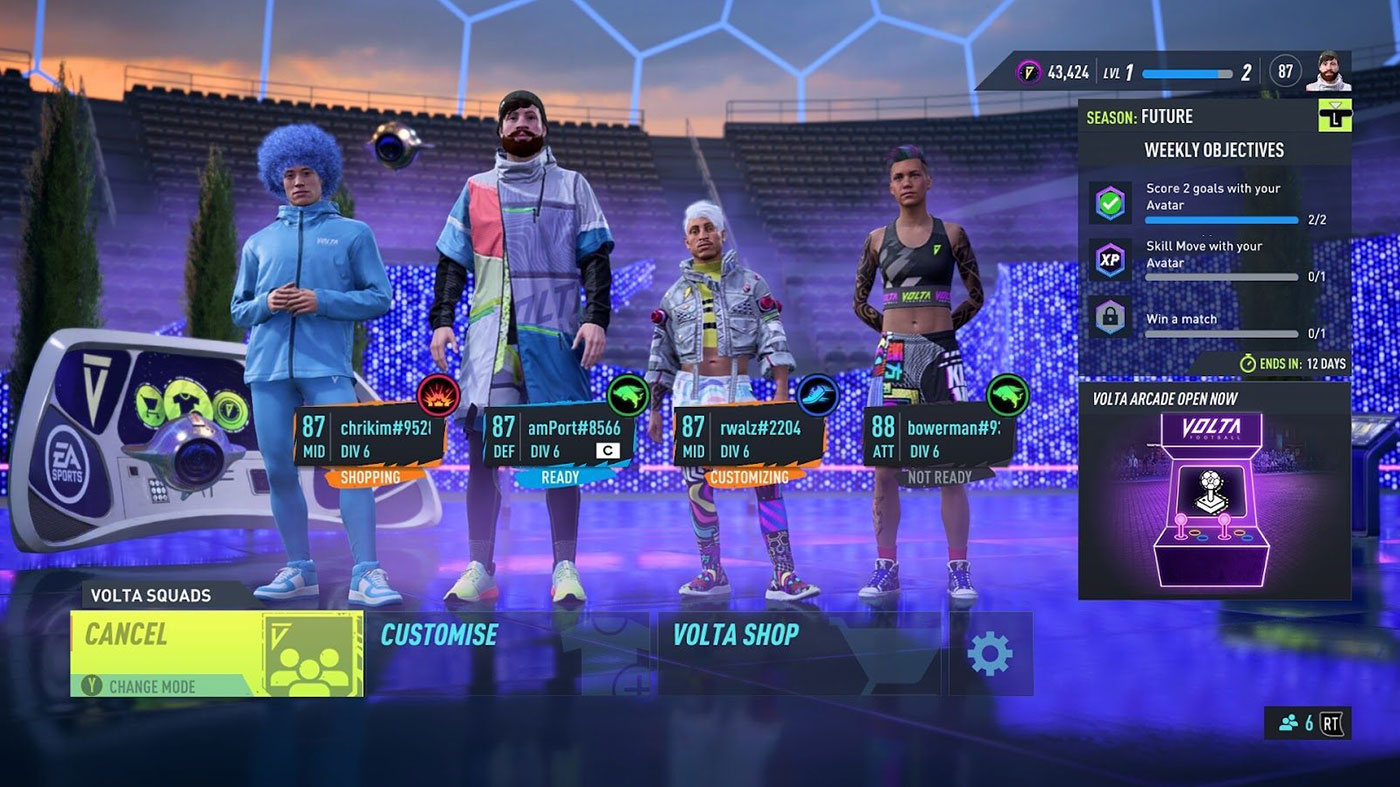
Perks are the biggest shakeup in player career, giving you a specific boost depending on your actions in a match. These range from a temporary boost in finesse strikes to better long-range passing accuracy. Similarly, in-match objectives help push you along the way in player career. Whether you’re subbed on or start a game, you’ll always have three objectives to aim for. Completing these objectives will earn favour with the coach, allowing you to move up the ranks and into the club’s first XI. You can also ‘enhance’ an objective, pushing the designated requirement up a bit, which will net you additional XP.
This all comes together to form a mode that feels like it’s finally progressing forward. It’s no The Journey, of course, but I do like the fact there’s more of a story embedded into player career. As such, I hope to see a deeper dive on this in subsequent entries of FIFA, like being able to play in the youth team or something along those lines.
Disappointingly, Volta, FIFA’s street football mode, sees very little change this year. A skill meter has been added, which fills up by pulling off skill moves in a match. If you’re able to fill it up entirely, you can score more than the traditional one point a goal entails, earning up to three points with one strike. Signature abilities also make their way to the mode, giving you a specified ability that you can call upon in-game when your personal meter fills. Each of the signature abilities are different, based around a more powerful shot, faster pace or stronger tackles.
Volta feels more arcadey than ever before thanks to these additions. And while I don’t mind EA taking the mode in this direction, I’d have loved to see more focus on single-player game types and tournaments within it. Volta feels more like a multiplayer time sink than it has before, lacking any notable component that’ll keep someone who prefers to play single-player matches coming back.
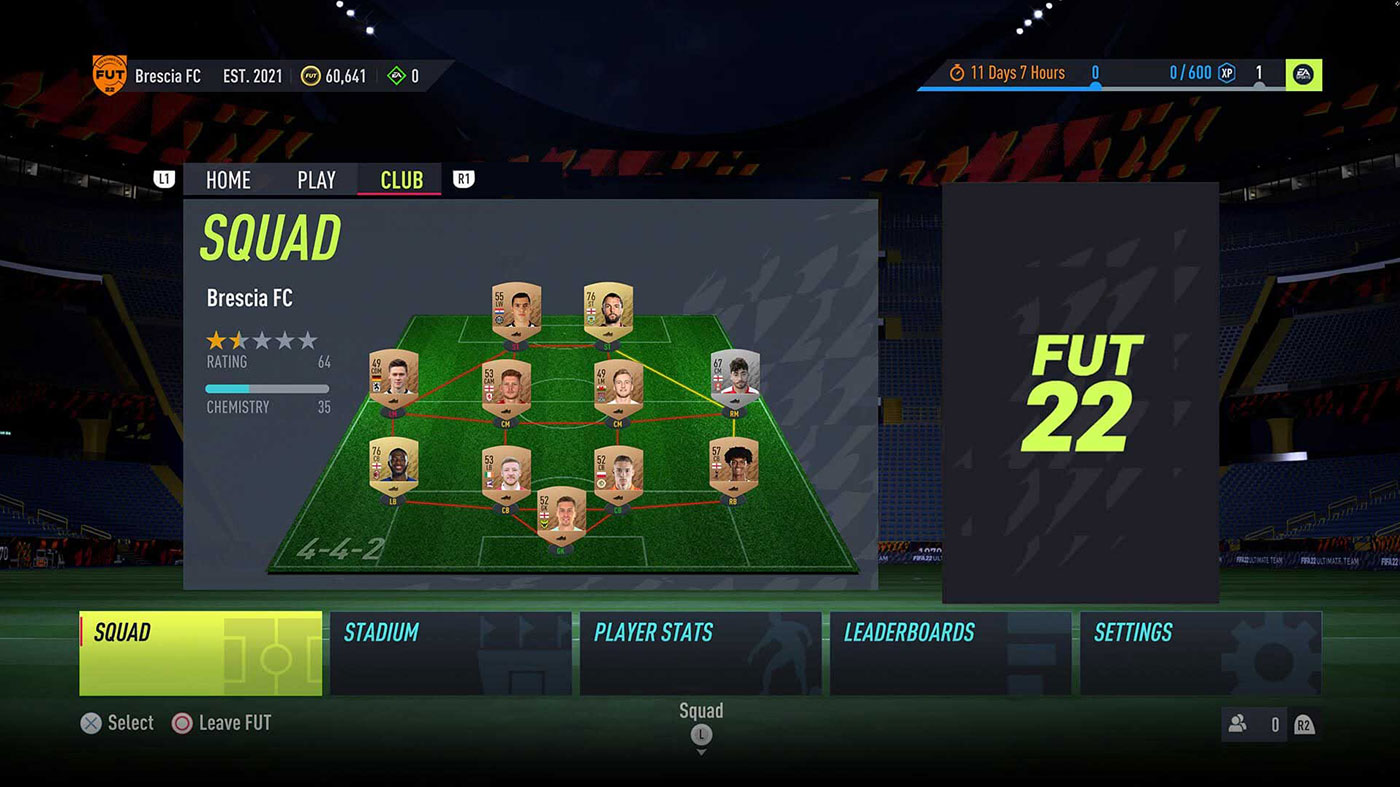
FIFA’s other main multiplayer modes have seen minor change. Ultimate Team continues to have an insidious grip on most players, and microtransactions are encouraged at every turn. You can now customise the VIP area of FUT Stadium if you so desire, while Division Rivals will reward time spent in the mode, whether you win or lose. FUT Champions is split into Play-Offs and Finals in FIFA 22, which should give competitive players a nice change to what’s come before in Weekend League. It’s nice to see some quality-of-life improvements in FUT, but after spending a couple of hours opening packs and playing around with what’s on offer, I still find myself quickly gravitating away from it – it’s just not for me.
Women Virtual Pros are the big change to come to Pro Clubs, and it’s a change that’s very welcome. I’d had hoped we’d have seen a lot of representation across FIFA’s game modes when women’s football was introduced some time ago, yet the implementation has been going at a snail’s pace. I hope that one day we get the women’s leagues into Career Mode, but I feel that’s some way off. Needless to say, it’s a step forward.
DualSense support is, once again, great in FIFA 22. I love the way the controller feedback works as you crash into tackles or take an all-important shot. I do continue to worry about the adaptive triggers, however, as it feels like I’m in a constant battle with them as player stamina begins to drain at the tail-end of a match. It’s been almost a year and my original controller marches on unbothered, though, so it mustn’t be having that bad of an effect.
Even with some issues and shortcomings, this year’s FIFA is the best in some time. HyperMotion accelerates it ahead of the competition, and it’s great to see some major changes to Career Mode. Stewart Robson coming in for commentary, alongside Alex Scott as pitchside reporter, has also given some much-needed revitalisation to the commentary in the game. All in all, there’s something here for everyone, and the series is finally charting a course I can get behind.


